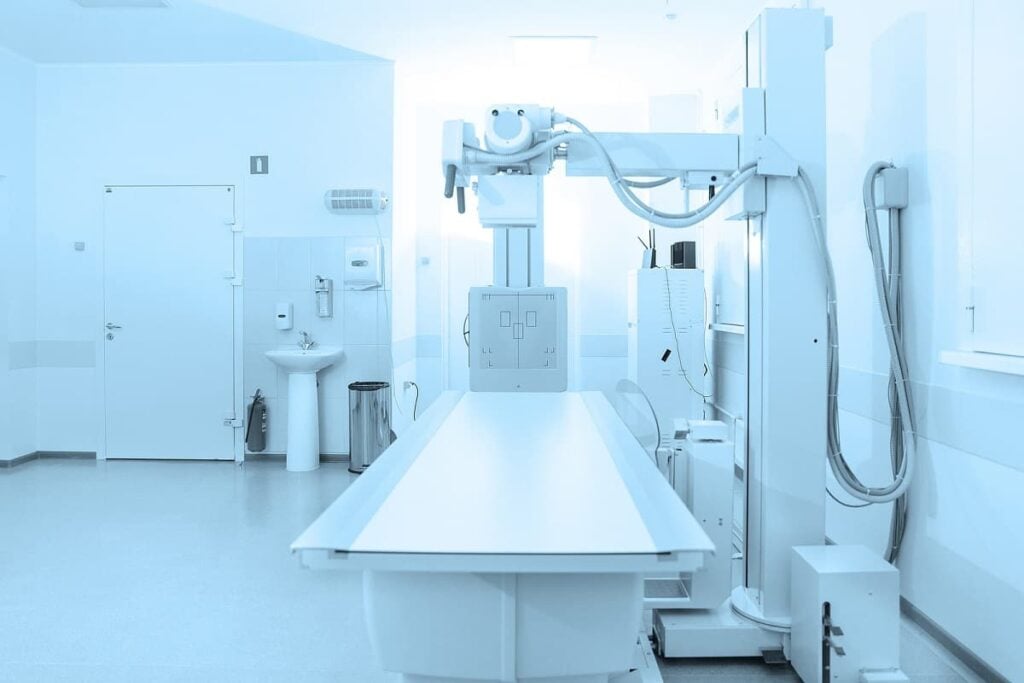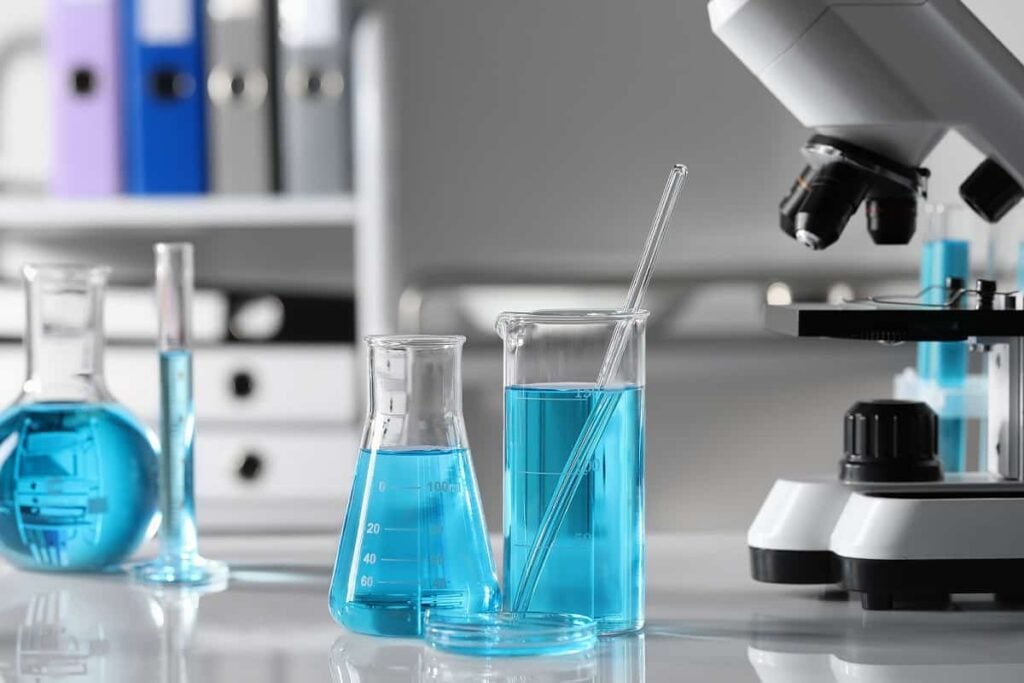Simulating Cancer Cells Using Artificial Intelligence
Table of contents

Hoteliers in Hungary must be loving life right about now. In 2018, Hungary set a record of 31 million hotel nights booked by tourists. From obnoxious British stag do goers to snap-happy Chinese mainlanders, the streets of Budapest – that’s Hungary’s capital city for the geographically challenged – are chock full of people enjoying the “Paris of the East.” It’s a city built on a vast network of underground caves and springs which means there’s plenty of sauna action to be found, not just for the sort of lads who cruise Soho’s Sweatbox on weekday nights. We recently airdropped one of our MBAs into the city center to bathe in its healing waters and speak with a startup that’s trying to heal people using artificial intelligence.
Turbine – Simulating Cancer Cells Using AI
Founded in 2015, Budapest startup Turbine has taken in an undisclosed amount of funding to develop a platform that uses artificial intelligence to better understand cancer tumors. As we’ve talked about in past articles, there is no single “cure for cancer” given that there over 100 types of cancer and each case is unique. What all types of cancer share in common is the aggressive replication of cells that form the tumors which surgeons then try to remove.
Update 11/06/2019: Turbine has raised $3.3 million in seed funding to fight cancer by finding the smartest route to novel targets, biomarkers, and combination therapies. This brings the company’s total funding to $3.3 million to date.
What Turbine does is to use tumor-specific DNA and RNA data to then create “Simulated Cells” which are simulations that mimic the behavior of actual cancer cells. A look at their white paper shows an incredibly complex technology that’s difficult to grasp without having any medical background. Fortunately, we have MBAs on staff – people who excel at getting other people to do all the work and taking credit for it. One of our MBAs sat down with Co-founder and Chief Technology Officer at Turbine, Kristóf Szalay, to try and better understand the technology platform he’s been working on for nearly a decade.
Building Digital Cells
A few years back, we published an article on 9 Computational Drug Discovery Startups Using AI in which we attempted to explain the drug discovery process in the simplest of ways as follows:
- Find a new protein in the body to hit with molecule
- Find molecule(s) that binds to protein in body
- Once you find a hit, then turn it into something that can be introduced to a living being
That’s the end goal. In a subsequent article, we looked at How Computational Chemistry Helps Drug Discovery by using computer simulations to assist in solving chemical problems. That’s what Turbine is doing, and the first step in their process is to create simulated cells – digital recreations of living things.
Over the past 10 years, Turbine has been working on building the first high-definition virtual tumor cell. It all starts with a bog-standard cell “wire frame” that’s common among all the body’s cells. To that, they then start adding additional data layers as seen below:

In order to ensure that the cell simulations match the behavior of real-world cells, experiments can be run digitally, and the outcome matched to wet lab experiments. These performance tests are a great way to determine that the system is working as expected. And indeed, it does. These Simulated Cells are similar to real cells in that they can actually exhibit behaviors that real cancer cells do such as:
- Apoptosis – the death of cells which occurs as a normal and controlled part of an organism’s growth or development.
- Proliferation – the rapid reproduction of cells
- Potential metastatic activity – measures whether the enzymes required for separating from the main tumor and adhering to other regions in the body are present or not.
There are as many cancers as there are patients in terms of the genetic makeup and gene expression patterns of the tumor. Imagine being able to take a patient’s cancer cells, create a computational model of the tumor, and then figure out what drugs the tumor will respond to? That’s the next step in the process.
Modeling Cell Behavior
Once a Simulated Cell has been created, Turbine can then begin performing experiments that determine how this complex system will respond to external stimuli. To predict how a compound or a combination of compounds will affect the behavior of the tumor cell in real life, they run simulations on millions of potential permutations of drugs, doses, functional mutations, and micro-environmental factors – like changes to the intracellular fluid that surrounds cells. Mr. Szalay talked about a common use case which is to explore the “dose response curve” which is to figure out the point at which a compound kills exactly half the cells. Think of it like that painful “efficient frontier” they forced you to learn about in finance class.
Turbine has successfully simulated over 200 cancer models and near 100 compounds. Imagine all the combinations and permutations of experiments you could run with all these variables. For pharmaceutical companies, the ability to learn why certain patients reacted negatively to a compound in a clinical trial means they don’t have to scrap the entire program. That’s where the artificial intelligence comes into play.
Learning with Artificial Intelligence
By now you’re probably thinking that millions of simulations will produce massive amounts of delicious big data that can be fed to AI algorithms – and you’d be right. Several days of simulated experiments will produce millions more data points than years of lab research. This is where they can figure out the “why.” Why did a certain combination of drugs affect certain cells differently than others? Try mining a terabyte-sized database to figure that out and you’ll probably get nowhere. Even worse, imagine trying to do the same thing in a wet lab. The costs and time needed would prevent you from running “outside the box” experiments or running the same experiment with slightly different parameters.
Case Studies
The idea sounds good on paper but the only way you can prove such a complex system works is by getting people to use it – then turning those people into customers. Turbine already has paying customers – the one they could name is German pharmaceutical giant Bayer – and two other paying customers are among the top-10 pharmaceutical companies in the world. Turbine use cases span the entire drug development pipeline from early discovery to FDA approval, and their primary services can be classified into three distinct areas:

Let’s take a look at some case studies for Turbine’s technology platform.
Case Study 1 – Biomarker Identification
According to Wikipedia, “a biomarker is a measurable indicator of the severity or presence of some disease state.” An analogy might be the “signatures” that are used to identify computer viruses. In cancer drug development, biomarkers are used to enhance patient benefit, trial success, and approval rates. A drug is three times likely to make it from Phase 1 to approval if certain biomarkers can be identified. It’s something that’s impossible to do in a lab as you need to run millions of experiments.

One of Turbine’s clients had entered clinical phase with a compound and needed to identify some biomarkers that would predict patients who might react negatively to the compound. Out of the 20 genes identified as biomarker candidates by Turbine, the client successfully validated 9 – some of which were novel findings. The client did not find new biomarker candidate genes not predicted by Turbine.
Case Study 2 – Combination Therapies
Commissioned by a partner in the pharmaceutical industry, Turbine explored the possibility of combining the partner’s compound with other drugs in order to identify synergies. They started by taking 37 different types of tumor cells – what they refer to as “cell lines” – and then explored how the cells would react to various compounds in various dosages.
Turbine solved this by applying an AI-based optimization method to find the best dosage ratios. In the optimization process, the algorithm homes in on combination candidates with the highest synergistic effect and lowest total drug concentration. The end result was that they found 72 “highly promising” combinations that could be used to help guide the client’s drug development efforts – 9 of which were backed up by existing evidence.
Case Study 3 – Finding the Trigger
Chronic Lymphocytic Leukemia (CLL) is the most common type of leukemia in the Western world. It’s a symptom-less disease that some people get and you know that you have it based on a blood sample. However, it doesn’t hurt you for a long time – a decade perhaps – until eventually something unknown happens and everything drastically changes. Cells start multiplying, and the patient is dead within months. Turbine is working on finding out what triggers this by using simulations and AI to identify which proteins are associated with the change. They’ve started by analyzing the “before,” and now they’re waiting for the patients to relapse so they can see the “after.”
To Open Source or Not
Earlier this year, a paper was published titled “A Review of Cell-Based Computational Modeling in Cancer Biology” in which the authors spoke about how “open source platforms have lowered the barrier to entry for using sophisticated techniques” such as modeling cancer cells in digital environments. Mr. Szalay talked about how the open-source idea comes up every second quarter at his firm, but the truth is what they’re doing now is far too complex for them to unleash on the open-source community. Untrained users would be more likely to run into “garbage in, garbage out” problems and it’s too much work for Turbine to support those problems. At the moment, customers who are also internal users of the platform are driving the platform towards becoming more “usable”, and in the future, they may reach a point where it makes sense to open source the platform in order to accelerate advancements in cancer research. The idea is what some are now referring to as “mathematical oncology.”
Conclusion
We’ve talked plenty in the past about various companies using artificial intelligence for drug discovery, each of which could be a competitor for Turbine. However, Mr. Szalay sees the wet lab as their primary competitor. When he entered the world of biology as an engineer, he became perplexed by the uncertainty of it all. He found the research to be messy and was perplexed by cases where scientists couldn’t even be certain of getting the same result twice when running experiments. The marriage of biology and computing – something that Saint Steve Jobs prophesied as the future of technology – can help explain away the uncertainty of biology. And it appears to be working. Turbine has been recognized by large pharmaceutical companies such as Johnson & Johnson and Roche for the work they’re doing in this space that promises to change the way cancer research is conducted.
Sign up to our newsletter to get more of our great research delivered straight to your inbox!
Nanalyze Weekly includes useful insights written by our team of underpaid MBAs, research on new disruptive technology stocks flying under the radar, and summaries of our recent research. Always 100% free.
















